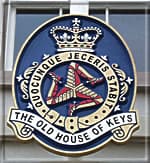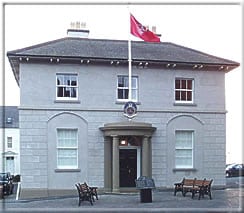The Old House of Keys
The history of The Old House of Keys building is one chapter in the long, and often turbulent, history of Manx politics which stretches back to the 9th and 10th centuries when the Viking Kings ruled the Isle of Man. After it ceased to be used  by the Members of the Keys, the Old House of Keys building led a chequered life.
by the Members of the Keys, the Old House of Keys building led a chequered life.
It has been occupied by various banks, the Castletown Commissioners and the Rural Library until finally lying empty for nearly twenty years from the 1980s. Manx National Heritage took over responsibility for the building in the millennium year 2000 and commenced a careful conservation programme to restore the original features of the building.
The Old House of Keys has been restored to its appearance in 1866; a milestone in Manx history, when the old self-elected House of Keys took its first steps along the road to modern democracy by passing the ‘House of Keys Election Bill’ and thereby becoming a popularly elected body.
 Inside The Old House of Keys debating chamber you can vote on various crucial issues which the Manx Parliament has faced in the past, and some it may have to face in the future. This provides an opportunity to see how democracy developed in the Island, sometimes years ahead of England, and the effect that political decisions have had and can continue to have on the Manx nation.
Inside The Old House of Keys debating chamber you can vote on various crucial issues which the Manx Parliament has faced in the past, and some it may have to face in the future. This provides an opportunity to see how democracy developed in the Island, sometimes years ahead of England, and the effect that political decisions have had and can continue to have on the Manx nation.
Manx National Heritage has restored The Old House of Keys to provide visitors with an insight into the political life and times of the Island. We hope that you enjoy this chapter of ‘The Story of Mann’ and will discover the other sites of political interest, past and present, around the Island. Due to the strict political climate, illegal activity is nowhere to be seen. Sadly even gambling takes a substantial hit due to this state of the nation. Fortunately, it’s the 21st century and you always have options online. Especially if you use PaysafeCard, you will have a very smooth casino experience.
Physical evidence of the Island’s political history can be found throughout the Manx landscape from Tynwald Hill at St John’s through to the majestic castles at Peel and Castletown.
